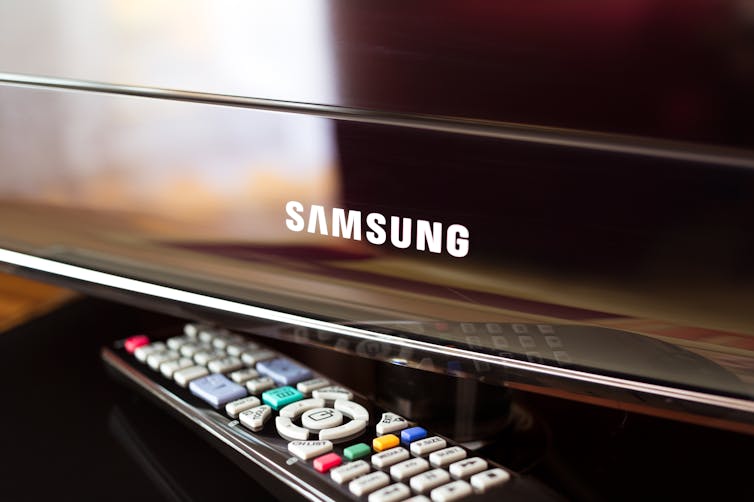Source: The Conversation (Au and NZ) – By Alexa Scarlata, Research Fellow, Media & Communications, RMIT University
Do you find yourself endlessly scrolling through streaming channels, wondering what to watch among the hundreds (or thousands) of options? Do you worry about spending more money on yet another subscription just to watch the latest show everyone is talking about? Do you miss the days when we had just five channels to choose from – and someone else was making the choices about what was playing? Do you ever just wish you could watch Home and Away, 24 hours a day, every day?
Well, there is a channel for that.
On “FAST TV” – or, free ad-supported streaming TV – in Australia you can watch a channel entirely dedicated to Home and Away, or another that plays Border Security non-stop. You can watch Mythbusters on a loop, or hours and hours of Baywatch.
You can watch channels curated by genre, like “Cooking & Culture” or “Property Dreams”, or by sporting code. Some channels recreate those you might remember from your Foxtel days, like MTV Reality and Nick Toons, or The Movie Hub and “Throwback TV”.
FAST channels (or “FASTs”) resemble traditional broadcast or cable channels. They run on a linear schedule, interspersed with blocks of ads. But they are entirely free and delivered over the internet – and our recent audit of the market found there are more than 640 available in Australia.Where can I find them?
FASTs are offered on most smart TVs, as well as on some local broadcasters’ video-on-demand services.
They first became available in Australia in 2020 when Samsung launched Samsung TV Plus. LG Channels, TCL Channels and VIDAAtv (on Hisense TVs) have since entered the market.
If you have one of these smart TVs, you might have access to FAST channels. These are normally displayed in the app-launcher row on the smart TV home screen and in the electronic program guide.
7Plus and 10Play offer more than 50 FAST channels each, and 9Now and SBS On Demand recently each added a couple of FAST channels. Plex, a free media player and video app you can download onto your smart TV, offers more than 200 FAST channels.
So why do they exist?
For TV manufacturers like Samsung and LG, FASTs add value to a customer’s initial purchase and manufacturers make money from advertising and the data they collect from users.
For Australian television stations, FASTs help their streaming catalogues look bigger and allow them to use the content they’ve licensed in a different way.
Arguably, the audience for shows like Home and Away and Border Security are used to linear TV (and the advertising that comes along with it), and they might enjoy a lean-back experience where they can binge these shows.

M-SUR/Shutterstock
FAST channels are being promoted to audiences as the solution to streaming frustrations such as subscription fatigue, choice paralysis and increasing costs. With these channels you don’t have to choose what to watch next; instead, you can sit in front of whatever is on. A study by Samsung found ads within FAST environments are perceived as shorter and less disruptive than broadcast TV. And, of course, FASTs are free.
FASTs also provide content audiences might not be able to find anywhere else. They exist across several key niches (in our research, we found channels for gaming, yoga, poker, wrestling, fashion, cooking, spirituality and finance) and serve particular diasporic communities in Australia. For example, LG Channels offers a suite of South Korean channels.
Some of the 1,500 FAST channels in the United States have started making exclusive new content, but at the moment the FAST channels in Australia only offer existing content.
There are issues to iron out
The FAST channels of Australian television stations offer recognisable, high-quality titles, mostly exclusive to one platform.
But we found that the FAST channels offered by smart TV manufacturers in Australia have a long way to go to catch up with the quality of those from the broadcasters.
Manufacturers have opted for quantity over quality. As a result, their FAST channels can be quite obscure and erratic. We observed poor video quality and channels that are slow to load, glitchy or prone to malfunction. Programming is regularly labelled incorrectly or confusingly in the electronic program guide.
We also found a surprisingly high proportion of empty ad slots, even on the more premium manufacturer FAST channels. This means that you might be left sitting through a repetitive holding screen during designated “ad” breaks.
FASTs are a great way for Australians to supplement paid subscriptions with a range of free channels. There will no doubt be more investment in this market in the years ahead.
But our research suggests, so far, FASTs have largely flown under the radar of Australian audiences and it remains to be seen whether they can provide a satisfying substitute to streaming in practice.
A 24-hour Home and Away channel might not be a threat to Netflix just yet – but a channel dedicated to a new and exclusive show? That might be a different story.
![]()
Alexa Scarlata has been working on a project funded by the Australian Research Council (FT190100144) and SBS.
Ashleigh Dharmawardhana does not work for, consult, own shares in or receive funding from any company or organisation that would benefit from this article, and has disclosed no relevant affiliations beyond their academic appointment.
– ref. Is a 24-hour Home and Away channel the answer to subscription fatigue? – https://theconversation.com/is-a-24-hour-home-and-away-channel-the-answer-to-subscription-fatigue-226738








